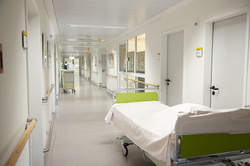Back to blog index

Dealing with lice outbreaks is a big challenge, especially in shared housing facilities such as boarding schools, nursing homes, or assisted living.
While lice maybe inconspicuous, lice infestations are a huge burden when they invade shared living spaces or healthcare settings.
Let's discuss the difficulties and solutions when faced with lice infestations in shared housing facilities.
Lice are parasites that survive by means of feeding on human blood. While lice do not spread diseases,
their presence can result in pain, itching, and, in some cases, secondary infections. In rare cases lice can cause death due to severe anemia.
Shared dwelling spaces, such as college dormitories, hostels or shelters, as well as medical centers where we are in near proximity,
residents are very vulnerable to lice spread. The following factors contribute to the spread of lice:
Lice outbreaks and lice infestations in nursing homes, in assisted living spaces, in boarding homes and in boarding schools, or in hospitals, all call for a professional lice removal service. By implementing lice preventive measures, bringing lice awareness , and having effective lice treatment strategies on-site we will minimize the effect of lice outbreaks and enable healthy environments for staff and residents.
Back to blog index
Addressing Lice Outbreaks in Housing Facilities and Hospitals

- Proximity Matters: Living in shared quarters promotes transfer of lice.
- Personal Item Sharing: Sharing personal items such as combs, hair brushes, hats, or bedding contributes to the spread of lice.
- Close Contact: In hospital settings and shared homes, the risk of lice transmission increases between both patients and healthcare providers such as nurses.
Key preventive measures to decrease the spread of lice
To prevent lice outbreaks, hygiene practices and proactive measures are a priority:- Educate staff, patients and students: Implement programs to bring awareness about lice, lice transmission, and lice prevention. Distribute informational materials about lice lifecycle and engage in awareness classes about lice spread.
- Maintaining Personal Hygiene is key: Encourage private hygiene practices, such as everyday hair washing, discourage the sharing of personal items such as hair combs and hair brushes, and maintain clean private and shared dwelling spaces.
- Regular Lice Checks and Inspections: Conduct frequent lice checks in communal living spaces and healthcare centers to identify and deal with lice outbreaks in early stages.
- Isolation Protocols: In clinical settings, establish protocols for identifying individuals with lice infestations to prevent further spread. Nits are a sign of lice.
- Collaboration with Lice Treatment Professionals: Establish regular services with lice removal service specialist companies to provide regular lice checks to contain lice outbreaks and provide lice treatments when necessary.
Management Strategies:
When lice troubles outbreaks happen, immediate action and attention make all the difference in prevention of further spread of lice. Nit removal is key to the success of a lice treatment protocol.- Treatment Approaches: Reach out to a professional lice treatment service: lice removal service professionals are able to bring their expertise in lice removal along with professional lice treatment products to your facility and conduct an effective lice treatment and lice removal on site.
- Thorough Cleaning: Conduct a thorough cleaning of living areas, inclusive of bedding, shared living spaces, and personal objects, to eliminate lice and nits.
- Effective Communication: Maintain open conversation with infected people, offering lice lifecycle education and directions on proper lice treatment, lice and nit removal, and lice preventive measures
- Follow-Up Lice Treatments: After addressing the initial lice infestation and removing all the live lice and all nits, follow-up lice treatments are required to confirm that a lice infestation is completely resolved. To prevent recurrence of lice, a followup lice treatment to remove any remaining lice or nits, and a followup lice check is required.